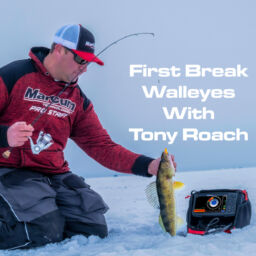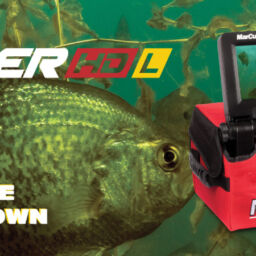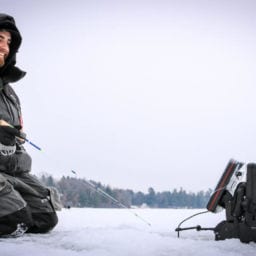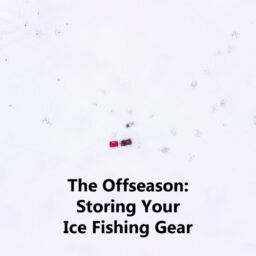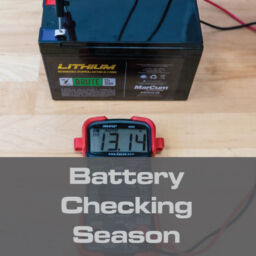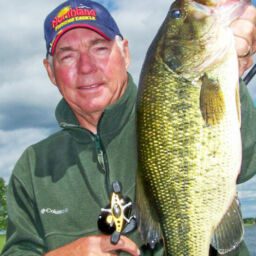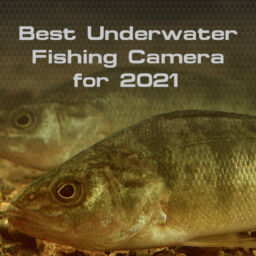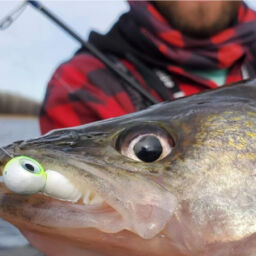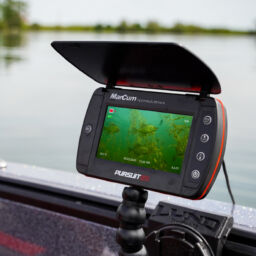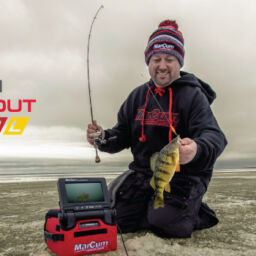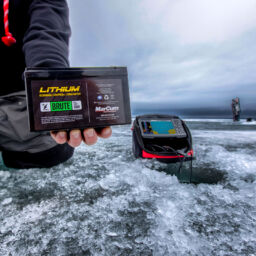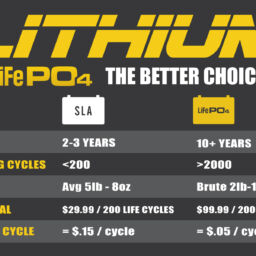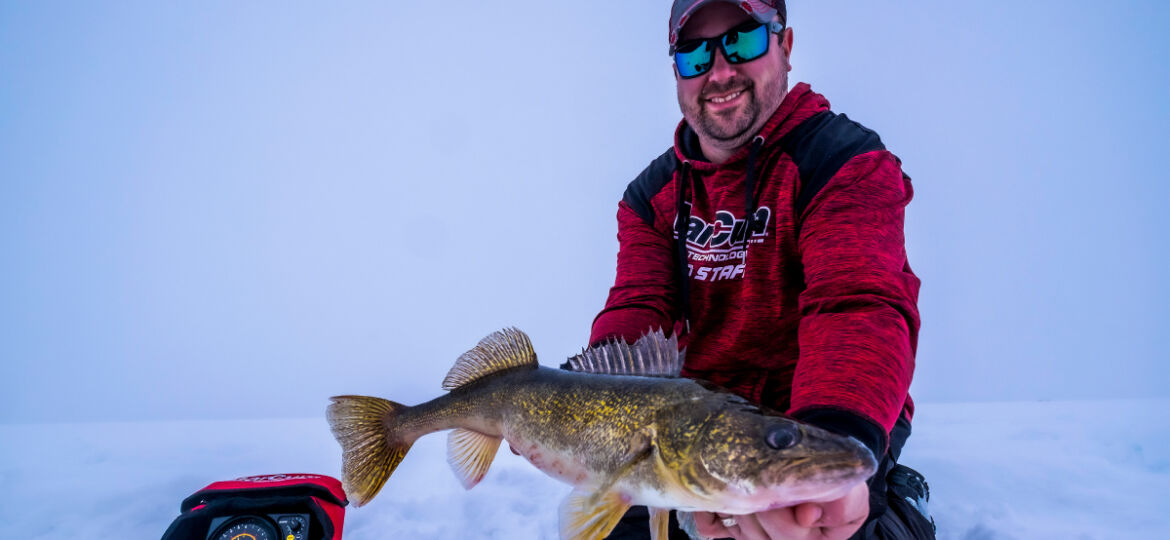
How to Target Late Ice Walleyes
We’re nearing the end of walleye season in MN, and things have gotten a bit tougher. Snow is deep and ice is thick(er), and the amount of available light at depth has been cut dramatically. Your early season haunts are likely nowhere near where you are ice fishing now, and at this point, it’s more about just getting bites rather than talking about how many you’re catching.
Every year the fishing, predictably, slows down in February, but savvy ice anglers are still making the most of what season is left. Minutia and detail are key as we approach the end of walleye season, and here are a few details that year in, year out, have always helped me put more fish topside.
Jigging Presentations
Aggressive jigging may still work in low light periods, or during pre-frontal conditions, but more often than not, this time of year sees fish investigating the racket without actually committing to it. That still means it’s worthwhile, especially rattle baits or other heavy vibration lures, to call fish more than catch them. This is especially effective if one person “rings the dinner bell,” such that other ice anglers and set-lines may be rewarded with fish generally being called into the area.
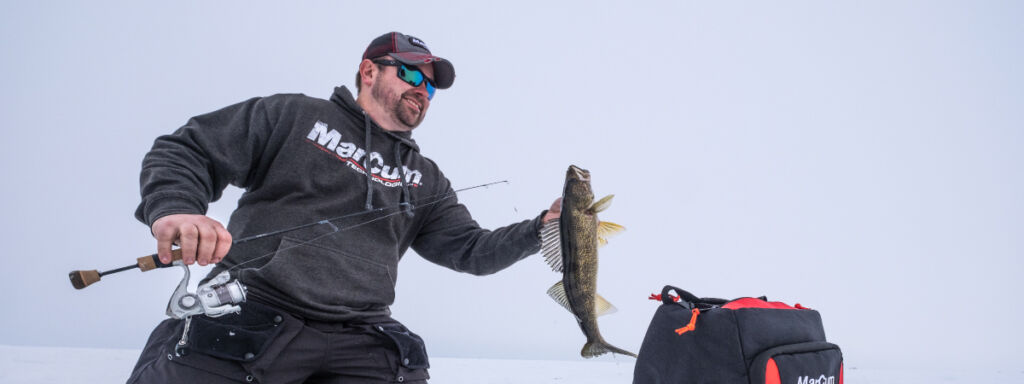
Color starts to matter more during this time of year, as fish get choosier. That means you might want to experiment with different hues during different light conditions. For example, high sun and clear skies may see favor for blue/chrome, gold, or other metallic colors, while clouds and low-light may see preference towards glow and UV brightened baits.
More important than color however is bait selection, with more deliberate lure classes, fished less aggressively catching most of your jig fish. Lift and pause, more than twitch incessantly.
Focus on short drops and spoon baits to do most of the jigging work during this time of year. Plain Jane is more exciting than fancy and frills. Truly, less can be more here.
Dead-Sets
Whether we’re talking rattle reels, deadsticks, bobbers, or a combination thereof, you need to be employing the use of some stationary systems with free swimming live bait. This can constitute the majority of your spread, though some active jigging is always welcome to draw fish in. From here, you want to fine-tune your approach.
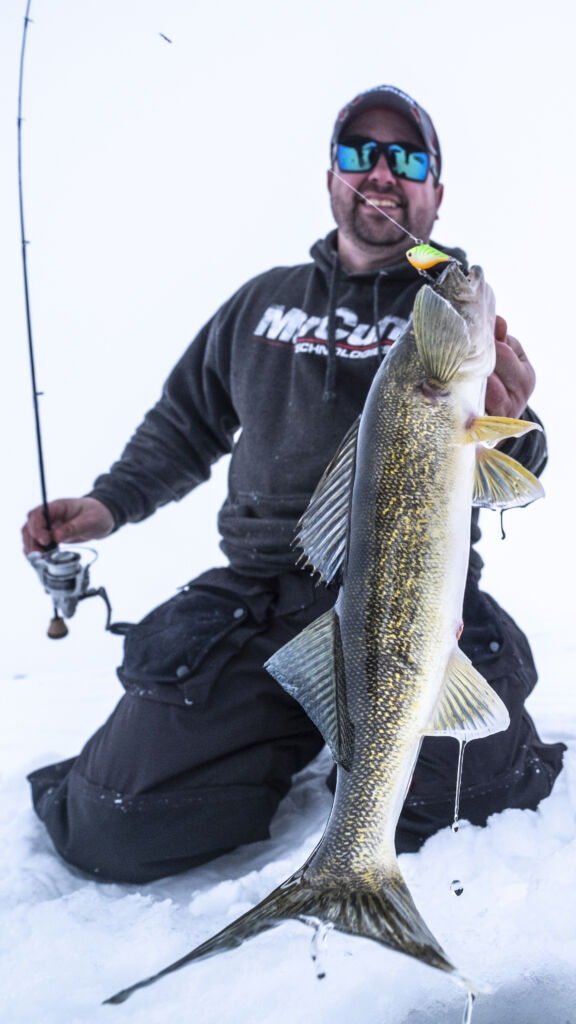
Dacron and big bobbers were fine early in the season. Use instead smaller marker bobbers on rattle reel setups, that displace little water, and offer little resistance to a fish eating your minnow. Now, you should be running a long fluoro-carbon leader to the hook end, making sure that your presentation looks as natural as possible.
Speaking of hook-end, consider your dead sets like a trolling spread. Vary your look to fish by offering a variety of hook choices and let them play favorites. You should start with a small wire hook with no color, up to colored variations, glow resin trebles, and then actual jigs to hook your minnows. Often, on the toughest days, the smallest hooks and most natural presentations win, which is something you’ll never know if you have 4 set lines down, each with the same jig as the rest.
Tend your set with electronics when possible. Too often, in a hard-house I see unmonitored lines down everywhere. Eventually, people disregard them, only to find out a large sucker swam and tangled with the next-door line, a walleye actually picked another minnow clean, and the last set has a dead minnow on it.
Careful watch with electronics, even on your dead sets, will tell you how popular your offering really is. When something is being approached constantly, yet not eaten, it’s high time to make a change.
Minnow IQ
Not all minnows are created equal in the opinion of most marble-eyes. Fish that I’ve been on this year have shown a strong preference for smaller than normal suckers, and more importantly shiners. They’re the minnow we love to hate. Look at them wrong, and they’ll go dying on you, but employ them correctly and they can save a trip.
Again, consider putting your eggs in multiple baskets here. Get a mix of fatheads to tip spoons, shiners and suckers for dead-sets, and even rainbows to mix things up where available. The goal is to let fish in an individual system, be individuals. Never argue with what the fish want, as they tend to win.
Other Details
Location can be really important at the end of the season, as fish can move less to feed, meaning you’re really on them, or really not. Small moves on a piece of structure can mean everything, as a house that’s positioned 15-20 feet away from a transition or other hotspot means it’s too far away for lethargic late season eyes to head over and eat.
That also spurs a discussion on finding. Make sure to keep looking for fish, even if you’re in a proven location. Hub houses and other portables are invaluable scout-shacks, even if you’ve got a great permanent house to fish from. Quite often, these scout shacks can offer valuable intel on timing of the bite, shallow vs. deeper, and what general preferences fish may have in a certain area.
In addition, cameras like the MarCum Pursuit HD L are great tools for a host of fishing situations, but pull them up during this part of the year when stationary. Especially in clear water, walleyes can shy to underwater cameras and actually affect the bite of your deadsticks and jigging presentations. For lots of hard-house anglers, this may be difficult to do, but it may just increase your catch rate.
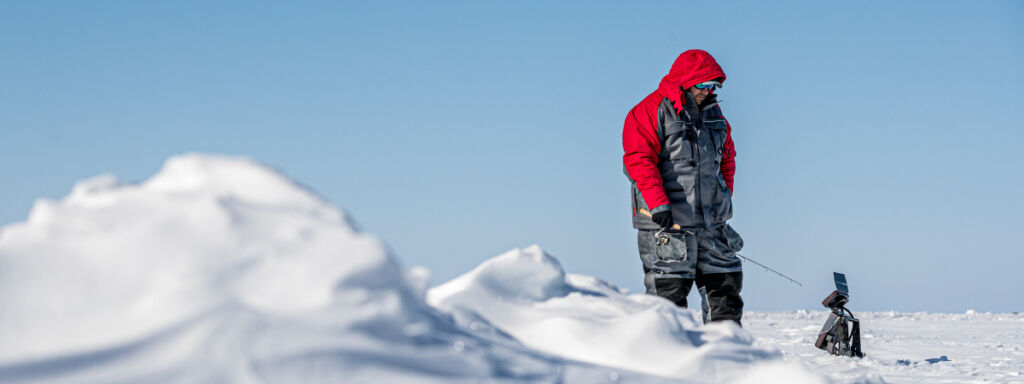
Lastly, pay attention. It’s tough to catch fish as the modern conveniences and enjoyments of most portables and wheelhouses draw our interest away from the actual fishing. I see it in new groups of anglers, kids, and avid anglers alike; the more focused a person is on catching fish, the more fish he or she will catch. If you’re only tuned-in when someone else is catching, you’ve likely already missed your opportunity.
That can be a big deal when you may only get a 15-minute window of action morning or night. Make the most of the experience by staying engaged, and you’ll already be doing better than most anglers on ice.


